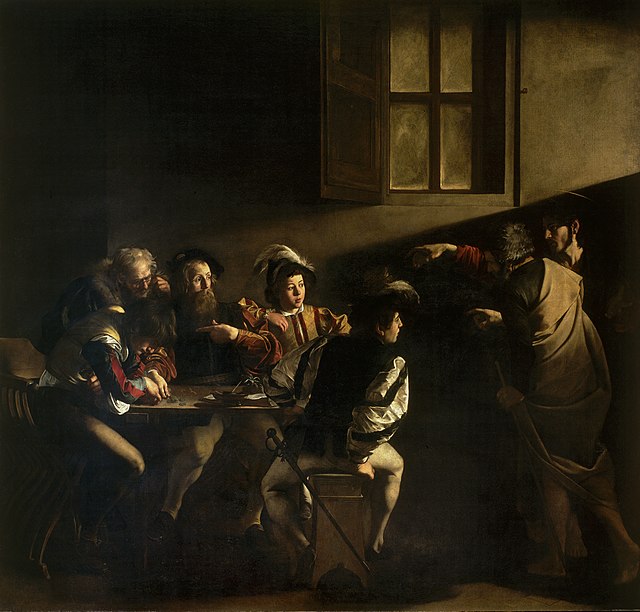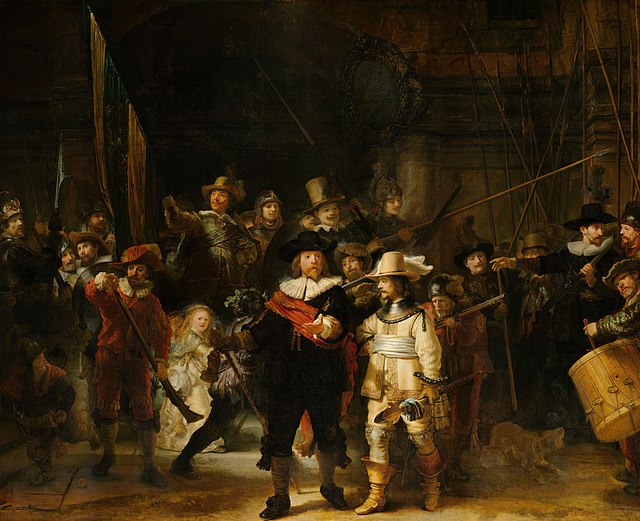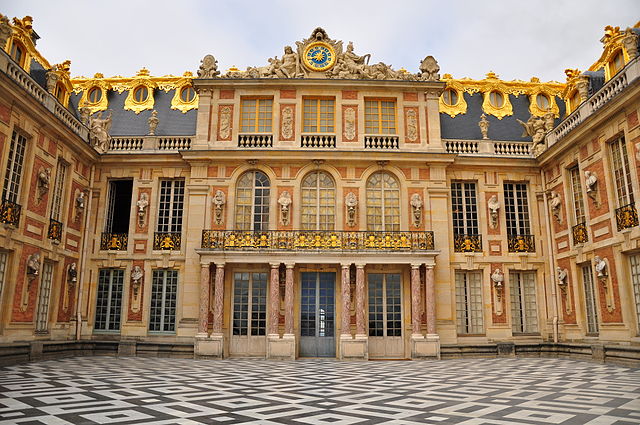Baroque painting is the painting associated with the Baroque cultural movement. The movement is often identified with Absolutism, the Counter Reformation and Catholic Revival, but the existence of important Baroque art and architecture in non-absolutist and Protestant states throughout Western Europe underscores its widespread popularity.
The Calling of Saint Matthew (1599–1600), by Caravaggio. Contarelli Chapel, San Luigi dei Francesi, Rome. The beam of light, which enters the picture from the direction of a real window, expresses in the blink of an eye the conversion of St Matthew, the hinge on which his destiny will turn, with no flying angels, parting clouds or other artifacts.
Rembrandt van Rijn, The Night Watch or The Militia Company of Captain Frans Banning Cocq, 1642, oil on canvas, 363 cm × 437 cm (143 in × 172 in), Rijksmuseum, Amsterdam. The painting is a classic example of Baroque art.
Orazio Gentileschi, David and Goliath (c. 1605–1607)
Nativity by Josefa de Óbidos, 1669, National Museum of Ancient Art, Lisbon
The Baroque or Baroquism is a Western style of architecture, music, dance, painting, sculpture, poetry, and other arts that flourished from the early 17th century until the 1750s. It followed Renaissance art and Mannerism and preceded the Rococo and Neoclassical styles. It was encouraged by the Catholic Church as a means to counter the simplicity and austerity of Protestant architecture, art, and music, though Lutheran Baroque art developed in parts of Europe as well.
Image: WLA metmuseum Venus and Adonis by Peter Paul Rubens
Image: Ecstasy of Saint Teresa September 2015 2a
Image: Cour de Marbre du Château de Versailles October 5, 2011
Pendant in the form of a siren, made of a baroque pearl (the torso) with enameled gold mounts set with rubies, probably circa 1860, in the Metropolitan Museum of Art (New York City, New York).








